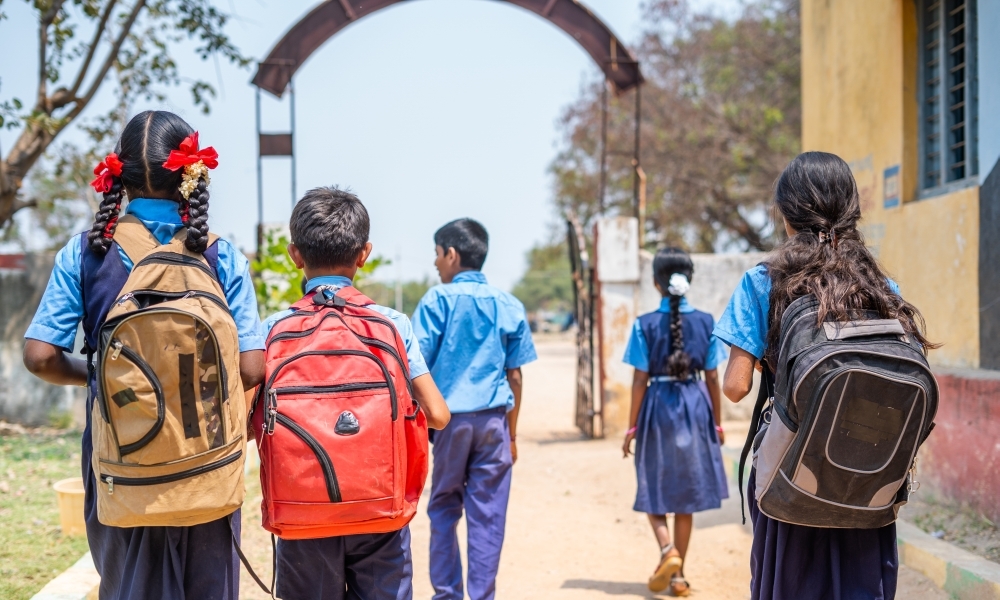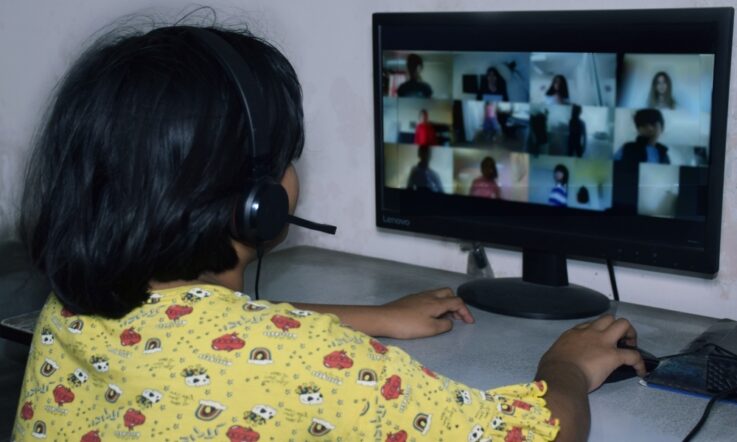Pooja Shandilya heads the Foundation years at Ahlcon International School, Delhi. In this article for Teacher, she presents her experiences of welcoming students back to school after the pandemic lockdown, and her team's strategies to recover learning losses and socio-emotional skills.
It was an abrupt halt to an otherwise seamless trajectory young children were taking to learn and negotiate academic and emotional challenges two years ago. The lockdown generation (as we reluctantly address them), failed to figure out what went wrong with their schools. Why did school buses stop honking, and why did teachers and support staff not turn up to escort them to the place they loved the most?
Schools in India suffered the most extended closures – nearly two years. Thanks to our context, digital access, and teachers' preparedness, we at Ahlcon International School managed to get back face-to-face with the students and families quickly. However, we knew what challenges lay ahead once we returned to face-to-face teaching. The little ones missed their toys to play with, manipulatives to explore, those ‘aha’ moments, and socialisation, which had an impact on their overall development. We noticed behavioural changes such as stubbornness, irritability, anxiety, and nervousness.
Studying the impact of lockdowns on our children
With more than 350 children aged four to five under my charge, assisted by a group of 25 teachers, it was the perfect occasion to study what was happening in our school. Other than academics, our primary concern was socioemotional development and language skills.
We set out to observe and journal anecdotal experiences to make sense of children's language ability, emotional status, behavioural patterns and learning readiness. We interacted with parents and informally gathered information on their expectations of their ward’s growth if the pandemic had not happened. We also asked them to share if they engaged in additional tutoring, homework support, and skill-development activities in person or virtually.
With the reopening of schools, some children showed excitement, but some were finding it difficult to cope with the routine of getting up early and dealing with the separation from parents and carers. Some of them cried and complained that they were unable to keep calm. Restlessness and stubbornness were palpable. Parental dependence was unusually high among many kids. Staying indoors during the lockdown took a toll on these little ones, with schools and other social and cultural spaces out of bounds for them.
What did we find?
We created a rubric to record graded levels of dependency, attention deficit, interest in physical activity and peer interaction. We found close to half of the children not scoring expected levels, compared to students of the same level who attended regular schooling before the pandemic. Another area of concern was the inability of some of them to converse with teachers and their peers. The following conversations were informative to the teachers.
Nimi, a conversant child, told her teacher a day before the opening that she would come only if the teacher welcomed her with a personal placard, ‘Welcome Nimi’. (Suggesting expectation and emotional connect)
Mariam, unable to complete the task, said that ‘she felt like crying for no reason’. (Coping difficulty)
Roshan asked his teacher, ‘Why was she absent during the two years of pandemic.’ (We could not figure out if it were anger or frustration because of prolonged isolation)
Dhami commented to the support staff that she looked too old since he met her last. (Wit and humour)
Vim took many a prank on the other children in the class. (Bordering on aggression)
Jimmy said, ‘Teacher, you played with us, may I share my tiffin with you?’. (Gratitude)
Manik told his music teacher, ‘I could never figure out where the sound came from when you sang online. Now seeing you in person, I can make it out’. (Awe and wonder)
Kris commented, ‘Ma'am, you are tall. Why did you look so short on screen?’. (Humour and wonder)
(Names have been changed to protect the privacy of the children)
A renewed focus on three competencies
A collation, analysis, and interpretation of the data informed an urgent need to deploy proactive multi-layered mitigation strategies to create an optimal learning environment. Teachers focused on three competency areas – language skills, emotional stability, and adaptiveness.
Home environment, the effect of the pandemic on the family members, and anxiety due to disturbing news in the media were critical influencers on socialisation and language skills. Our interactions with children and feedback during the parents’ sessions corroborated our conclusions. It became evident that COVID-compliant practices such as mask-wearing, staying at home, and social distancing negatively affected socio-emotional skills and language proficiency.
In the classroom, student participation in reading and speaking varied depending on the exposure they had during the shutdown. We noticed some children using polite language with fluency and good vocabulary. On the other hand, children with limited access during the pandemic lacked speech clarity, used limited vocabulary, and even showed cultural insensitivity. Many children with additional needs struggled with language skills due to the lack of resources, conducive environments, basic technology, educational materials, and training at home. We found that over 50 per cent of children needed additional help and practice to achieve minimum learning levels.
Proactive identification of the gaps was helpful. Building on the results, we chalked out strategies to enhance awareness and promote communication and language skills. Story sessions, games and physical activities were popular themes among the kids. A few children were initially not ready to leave their homes and were crying. However, a welcoming teacher with a smile on her face assuring children a safe and comfortable environment helped them return to school.
Classroom boards displayed welcome messages around jungle themes, the world of toys and seasons. Special circle time sessions focused on ‘getting to know your buddy’. Role plays, nature walks, independent task completion, and parental visits also supported the transition. Reassuring children, comforting them, listening to their concerns, and creating a healthy, playful learning environment all helped teachers and support staff to mitigate back-to-school anxieties.
Eileen Kennedy-Moore (2011), a clinical psychologist and expert on children's feelings, observes, ‘loving them for more than their abilities shows our children that they are much more than the sum of their accomplishments’. Moreover, the best place to do that is the classroom.
I would like to acknowledge my team, the parents, and school management for supporting this study.
References
Kennedy-Moore, E. & Lowenthal, M. S. (2011). Smart Parenting for Smart Kids: Nurturing Your Child's True Potential. Wiley.



